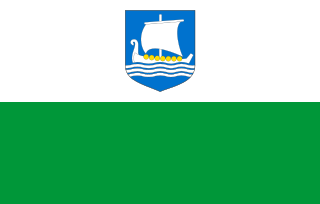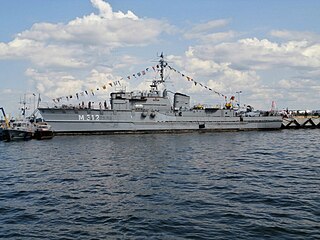This is a list of cities in Estonia that underwent a name change in the past.
This is a list of cities in Estonia that underwent a name change in the past.

Saaremaa is the largest island in Estonia, measuring 2,673 km2 (1,032 sq mi). The main island of Saare County, it is located in the Baltic Sea, south of Hiiumaa island and west of Muhu island, and belongs to the West Estonian Archipelago. The capital of the island is Kuressaare, which in January 2018 had 13,276 inhabitants. The whole island had a recorded population in January 2020 of 31,435.

Kuressaare is a town on Saaremaa island in Estonia. It is the administrative centre of Saaremaa Parish and the capital of Saare County. Kuressaare is the westernmost town in Estonia. The recorded population on 1 January 2018 was 13,276.

Viktor Eduard Kingissepp was an Estonian communist politician, the leader of the Estonian Communist Party.
Geographical renaming is the changing of the name of a geographical feature or area. This can range from the change of a street name to a change to the name of a country. Some names are changed locally but the new names are not recognised by other countries, especially when there is a difference in language. Other names may not be officially recognised but remain in common use. Many places have different names in different languages, and a change of language in official or general use has often resulted in what is arguably a change of name. There are many reasons to undertake renaming, with political motivation being the primary cause; for example many places in the former Soviet Union and its satellites were renamed to honour Stalin. Sometimes a place reverts to its former name. One of the most common reasons for a country changing its name is newly acquired independence. When borders are changed, sometimes due to a country splitting or two countries joining, the names of the relevant areas can change. This, however, is more the creation of a different entity than an act of geographical renaming.

Kuressaare Airport is an airport in Estonia. The airport is situated 1.5 nautical miles south southeast of Kuressaare on Saaremaa island.

The Saaremaa official football team is the official association football team of the island of Saaremaa in Estonia. Saaremaa are not members of FIFA or UEFA. They are not eligible to enter either the World Cup or European Championship.

FC Kuressaare, commonly known as Kuressaare, is a professional football club, based in Kuressaare, Saaremaa island, Estonia. The club's home ground is Kuressaare linnastaadion.

Kuressaare linnastaadion is a multi-purpose stadium in Kuressaare, Estonia. It is currently used mostly for football matches and hosts the matches of FC Kuressaare. The stadiums seated capacity is 2,000.

EML Sulev (M312) was a Lindau-class minehunter of the Estonian Navy Mineships Division.
The 2010 season of the Meistriliiga, the first level in the Estonian football system, was the 20th season in the league's history. It started in March and ended in November. The defending champions were Levadia.

Estonian Maritime Academy of Tallinn University of Technology is a vocational university in Estonia. It is one of the schools of Tallinn University of Technology and it is the only educational institution in Estonia that offers professional higher education and Master’s level education in the maritime field. The university is located in the capital Tallinn but also has two centres in Saaremaa. In addition to higher education, the school contributes to research, provides training and offers services. The Academy also holds a one of a kind Simulator Centre and has a whole dedicated floor of hi-tech laboratories.
Mändjala is a village in Saaremaa Parish, Saare County, Estonia, on the island of Saaremaa.
The 2011 Meistriliiga was the 21st season of the Meistriliiga, the top Estonian league for association football clubs, since its establishment in 1992. The season began on 5 March 2011 and concluded on 5 November 2011. The defending champions Flora won their ninth league title.

Kuressaare Castle, also Kuressaare Episcopal Castle,, is a castle in Kuressaare on Saaremaa island, in western Estonia.
Kuressaare is a village in Viljandi Parish, Viljandi County, Estonia. Until the 2017 administrative reform of Estonian municipalities the village was located in Tarvastu Parish. Kuressaare is located 23 km (14) southeast of the town of Viljandi, 3.8 km southwest of the small borough of Mustla. Neighboring villages include Pikru, Ämmuste and Jakobimõisa. Kuressaare had a population of 67 as of 2011, a decrease from 85 in the 2000 census.
The 2018 Meistriliiga was the 28th season of the Meistriliiga, the highest division of Estonian football system. The season was scheduled to begin on 25 February 2018, but was postponed due to a cold wave. On 3 March, the season began with four out of five second round matches held in indoor arena. This marked the first time Estonian league football was played indoor. The season concluded on 10 November 2018. Flora were the defending champions. Nõmme Kalju won their 2nd Meistriliiga title completing an entire season undefeated.
The 2019 Meistriliiga was the 29th season of the Meistriliiga, the top Estonian league for association football clubs. The season began on 8 March 2019 and concluded on 9 November 2019. Nõmme Kalju were the defending champions. Flora won their 12th Meistriliiga title.

Saaremaa Municipality, also known as Saaremaa Rural Municipality, is a municipality in Saare County in western Estonia. It is the largest municipality in Estonia by land area. The administrative centre of the municipality is its only town Kuressaare.
The 2020 Meistriliiga was the 30th season of the Meistriliiga, the top Estonian league for association football clubs. The season began on 6 March 2020, but was suspended after the first round due to the COVID-19 pandemic. The league continued on 19 May 2020. The season concluded on 6 December, with the last match between Flora and FCI Levadia cancelled due to COVID-19 cases in both teams. The defending champions Flora successfully defended their title, winning second title in a row and their 13th in total.